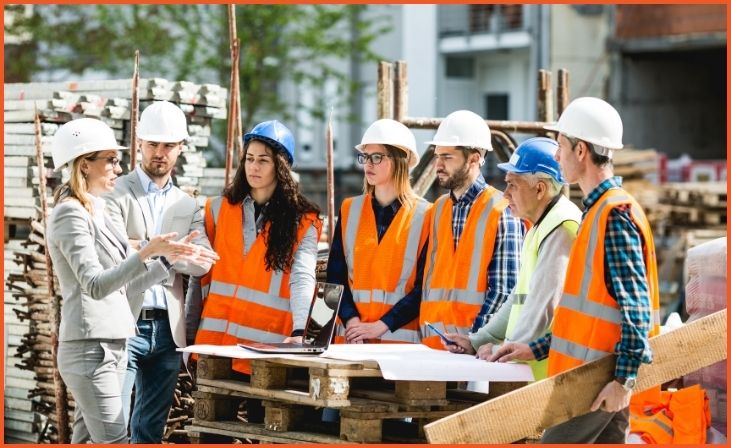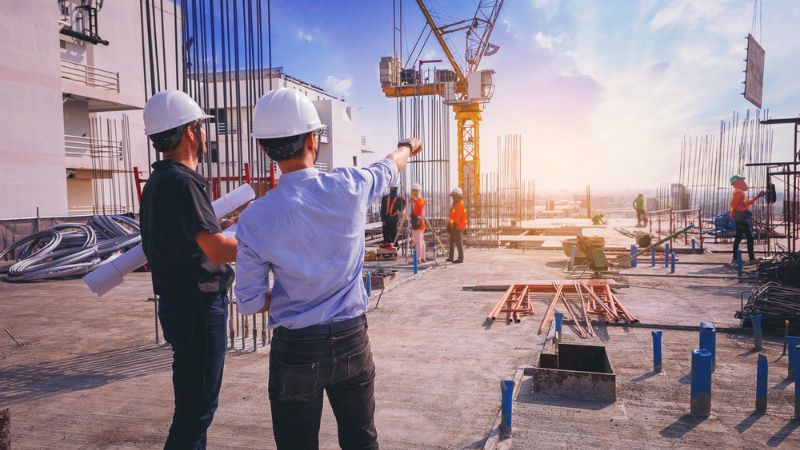Construction sites are bustling environments where various tasks converge to create remarkable structures. However, this complexity often leads to numerous challenges that can delay projects, increase costs, and compromise safety. Understanding the most common construction site problems is crucial for contractors, project managers, and workers alike. These issues range from inadequate planning and communication breakdowns to equipment failures and safety hazards. By identifying and addressing these common problems, construction professionals can enhance efficiency, ensure safety, and deliver projects on time and within budget. In this blog, we will delve into the 11 most common construction site problems and provide insights on how to effectively tackle them.
11 Most Common Construction Site Problems
Inadequate Planning

Inadequate planning is one of the most prevalent issues on construction sites. Without a well-structured plan, projects can quickly go off track. This problem often stems from poor initial assessments, unrealistic timelines, and a lack of detailed blueprints. When planning is insufficient, it can lead to resource shortages, unexpected delays, and budget overruns. To mitigate this, construction managers must invest time in thorough project planning, which includes detailed site surveys, realistic scheduling, and comprehensive resource allocation. Utilizing project management software can also help in tracking progress and making necessary adjustments in real time.
Communication Breakdowns
Effective communication is vital for the smooth operation of any construction site. Breakdowns in communication, however, are frequent and can result in serious problems. Misunderstandings between team members, unclear instructions, and lack of information sharing can result in errors, rework, and delays. To address this, establishing clear communication channels and protocols is essential. Regular meetings, detailed documentation, and the use of communication tools like instant messaging and project management platforms can enhance information flow and ensure everyone is on the same page.
Read Also: Innovations That Have Revolutionized Construction
Safety Hazards
Construction sites are inherently dangerous, and safety hazards are a constant concern. Common safety issues include falls, equipment accidents, and exposure to harmful substances. These hazards not only endanger workers but can also halt project progress and lead to legal complications. To improve safety, construction companies must implement stringent safety protocols, provide regular training, and ensure all workers have the necessary personal protective equipment (PPE). Conducting regular safety audits and encouraging a culture of safety can also significantly reduce the risk of accidents.
Equipment Failures
Equipment failures can cause major disruptions on construction sites. Whether it’s a malfunctioning crane, a broken excavator, or faulty power tools, these issues can halt work and lead to costly delays. Equipment breakdowns can be avoided with prompt inspections and routine maintenance. Additionally, having backup equipment available and training workers on proper equipment use and maintenance can help minimize downtime and keep the project on schedule.
Budget Overruns

Staying within budget is a major challenge in construction projects. Budget overruns can occur due to a variety of factors, including inaccurate cost estimates, unforeseen site conditions, and changes in project scope. To avoid this, detailed budgeting during the planning phase is essential. Regular monitoring of expenses and adjusting the budget as needed can also help keep costs under control. Using financial management software can provide real-time insights into budget status and highlight areas where spending is deviating from the plan.
Delays
Delays are a common issue that can severely impact construction projects. They can be caused by a range of factors such as inclement weather, supply chain disruptions, and unexpected site conditions. To mitigate delays, it is important to have contingency plans in place and maintain flexibility in scheduling. Regularly reviewing progress and identifying potential bottlenecks early can help in taking corrective actions promptly. Effective communication and coordination among all stakeholders also play a crucial role in minimizing delays.
Quality Control Issues
Ensuring high-quality work is a significant challenge on construction sites. Quality control issues can arise from substandard materials, poor workmanship, or inadequate supervision. These issues can lead to rework, increased costs, and compromised structural integrity. To address this, implementing a robust quality control process is essential. This includes regular inspections, setting clear quality standards, and ensuring that all materials and workmanship meet these standards. Engaging experienced supervisors and providing ongoing training to workers can also help maintain high-quality work throughout the project.
Labor Shortages
In the construction sector, a significant worry is labor shortages. Project delays, higher expenses, and lower quality can all be caused by a shortage of trained labor. This problem is often exacerbated by high turnover rates and an aging workforce. To address labor shortages, construction companies need to invest in training and development programs to build a skilled workforce. Offering competitive wages and benefits can also help attract and retain workers. Additionally, leveraging technology and automation can help fill gaps in the workforce and improve overall productivity.
Environmental Concerns

Environmental problems are becoming more relevant in construction projects. Waste management, pollution, and sustainable practices all need to be addressed in order to reduce the environmental effect of building operations. Compliance with environmental rules is critical for avoiding legal complications and project delays. Green building methods, such as the use of eco-friendly materials and energy-efficient technology, can assist to lessen construction projects’ environmental impact. A more environmentally conscious strategy may also be promoted by conducting regular environmental audits and interacting with stakeholders on sustainability projects.
Regulatory Compliance
Navigating the complex web of regulations in the construction industry can be challenging. Compliance with building codes, safety standards, and environmental regulations is essential to avoid fines, legal issues, and project delays. Staying updated with changing regulations and ensuring that all project aspects adhere to these requirements is crucial. Engaging legal and compliance experts can help in understanding and meeting regulatory obligations. Regular audits and inspections can also ensure that compliance is maintained throughout the project lifecycle.
Supply Chain Disruptions
Supply chain disruptions can have a significant impact on construction projects. Delays in the delivery of materials, equipment, and supplies can halt work and lead to increased costs. These disruptions can be caused by various factors, including logistical issues, supplier insolvency, and global events. To mitigate supply chain risks, maintaining strong relationships with multiple suppliers and having contingency plans in place is essential. Regular monitoring of supply chain performance and adjusting procurement strategies as needed can also help ensure a steady flow of materials and supplies to the construction site.
Read Also: Techniques For Reducing Construction Costs
Conclusion
Construction site problems are inevitable, but with proactive measures and strategic planning, they can be managed effectively. By recognizing and addressing these common issues, construction teams can ensure smoother project execution, enhance safety, and avoid costly delays. Staying informed and prepared is key to overcoming the challenges that arise on construction sites.
FAQs
What is the most common problem on construction sites?
The most common problem on construction sites is inadequate planning, which can lead to delays, increased costs, and safety issues.
How can construction site safety be improved?
Construction site safety can be improved through regular training, adherence to safety protocols, proper equipment maintenance, and effective communication among team members.



